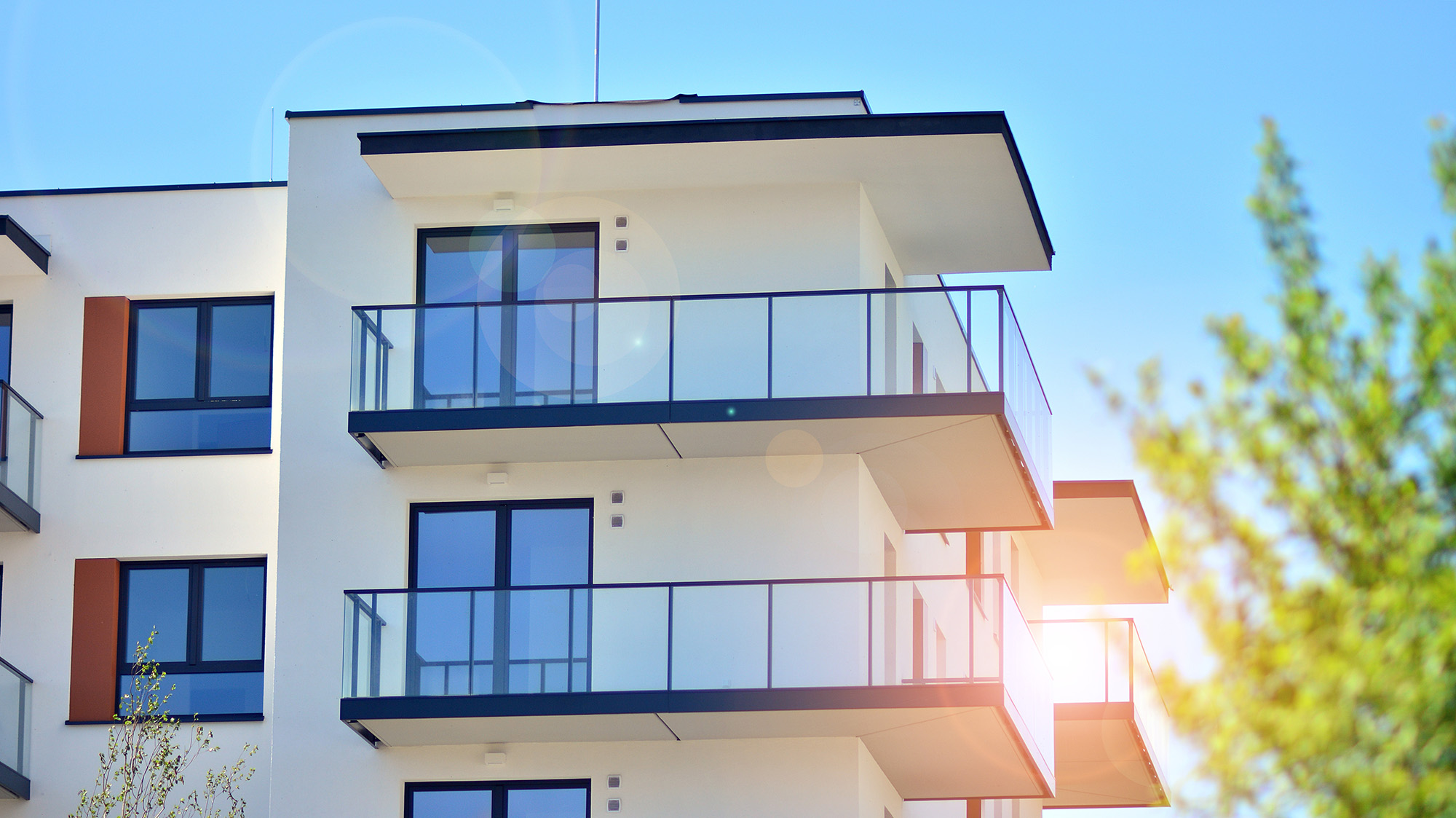This is the fourth essay in a series by Peter VanderPoel, AIA, to help explain the fundamental principles and science of Passive House design. Read the first essay outlining the basics here, followed by the article on super insulation here, and air barriers here.
Imagine being outside with Grandmother’s blanket wrapped around you and a sturdy windbreaker from head to toe. Having heard of the legend of flagpoles tasting sweet on bitterly cold days, you press your tongue against one to find out the truth. Grandmother would not be proud. All the efforts put into the thermal barrier and air barrier have been defeated by a conductive failure and an embarrassed, garbled cry for help.
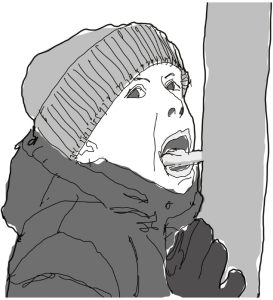
Thermal bridging at its worst.
To be effective, thermal barriers created need to be strictly continuous, and any interruption is considered a thermal bridge. Like myriad holes in an air barrier, these seemingly minor interruptions can add up to substantial energy losses.
Perhaps the most common and easily recognizable thermal bridging happens with wood stud construction. The 2x4s are normally spaced every 16 inches. A 2×4 is actually 1.5 inches wide, with a typical wall consisting of drywall attached to the inside face and plywood to the outside. But, a 2×4 is not a good insulator – it has an R-value of about 4.5 total and represents the infamous “path of least resistance” for heat loss. (R-values were discussed in the article on Tenet 1: Super Insulation.)
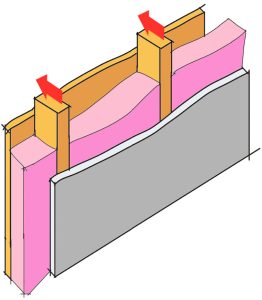
Thermal bridging at wall studs.
We can calculate the degraded R-value in a typical wood stud wall: A stud bay of 16 inches will have 1.5 inches of that distance given over to wood studs. If we include the extra studs at the corners and top and bottom plates, nearly 10% of the wall is solid wood.
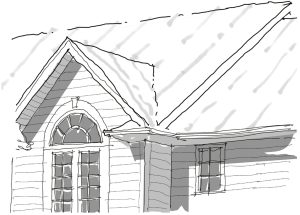
Thermal bridging at roof rafters.
Perhaps the easiest place to see thermal bridging is after a light snow. Many roofs will develop a striped pattern where snow accumulates above the batt insulation, but has melted where the roof rafters are located.
A common design feature for large apartment buildings is to provide a cantilevered balcony without any columns or cables supporting the outer edge. This is accomplished through a structural material, usually steel or concrete, that is necessarily continuous with the interior floor system of the apartment. As mentioned earlier, most insulations are designed with pockets to hold air. This creates a low-density material (where density is measured in weight per volume, i,e, lbs/cubic foot). Steel and concrete are fabulously dense and, in the example of the cantilevered balcony, would transfer phenomenal amounts of energy to the outdoors. There are serious efforts to create an interstitial material that can eliminate the thermal break but maintain the structural continuity to accomplish a cantilevered balcony.
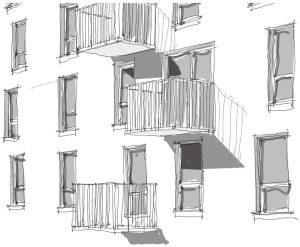
Thermal bridging at a balcony.
Although it’s possible to include the cantilevered projections in the thermal envelope, it is a difficult detail to accomplish. The most direct method is to have the balcony suspended (by cables) or supported (by columns) at the outer edge with the structural materials discontinuous with the interior floor structure. Some mechanically attached exterior cladding requires a “spot” calculation for “point” thermal bridging.
So, how do you design to reduce the effects of thermal bridging? WUFI (“Wärme und Feuchte Instationär,” which translates as “Heat and Moisture Intransient”) is a software package that allows designers to calculate and evaluate the performance of the design before construction begins. Although the goal is to avoid thermal bridging, there is a module in WUFI to calculate thermal bridging losses, accepting the energy losses while still receiving Passive House certification.
To combat the most common thermal bridging in wood stud construction, the easiest solution is continuous insulation. This method keeps the wood stud construction similar to what was mentioned before, but adds a layer of rigid insulation outboard of the standard wood frame to blunt energy losses of the wood studs. This method has now appeared as a required component in building codes.
Next Time: Tenet 4 – Eyes Glazed Over…

VanderPoel Architecture is located in Arlington, Virginia, and designs residential and light commercial projects throughout the Washington, DC metro area.
Peter VanderPoel AIA
703.725.4328
peter@pvanderpoel.com
Visit corcoranmce.com to search listings for sale in Washington, D.C., Maryland, Virginia, and West Virginia.
Don’t miss a post! Get the latest local guides and neighborhood news straight to your inbox!

 Facebook
Facebook
 X
X
 Pinterest
Pinterest
 Copy Link
Copy Link
